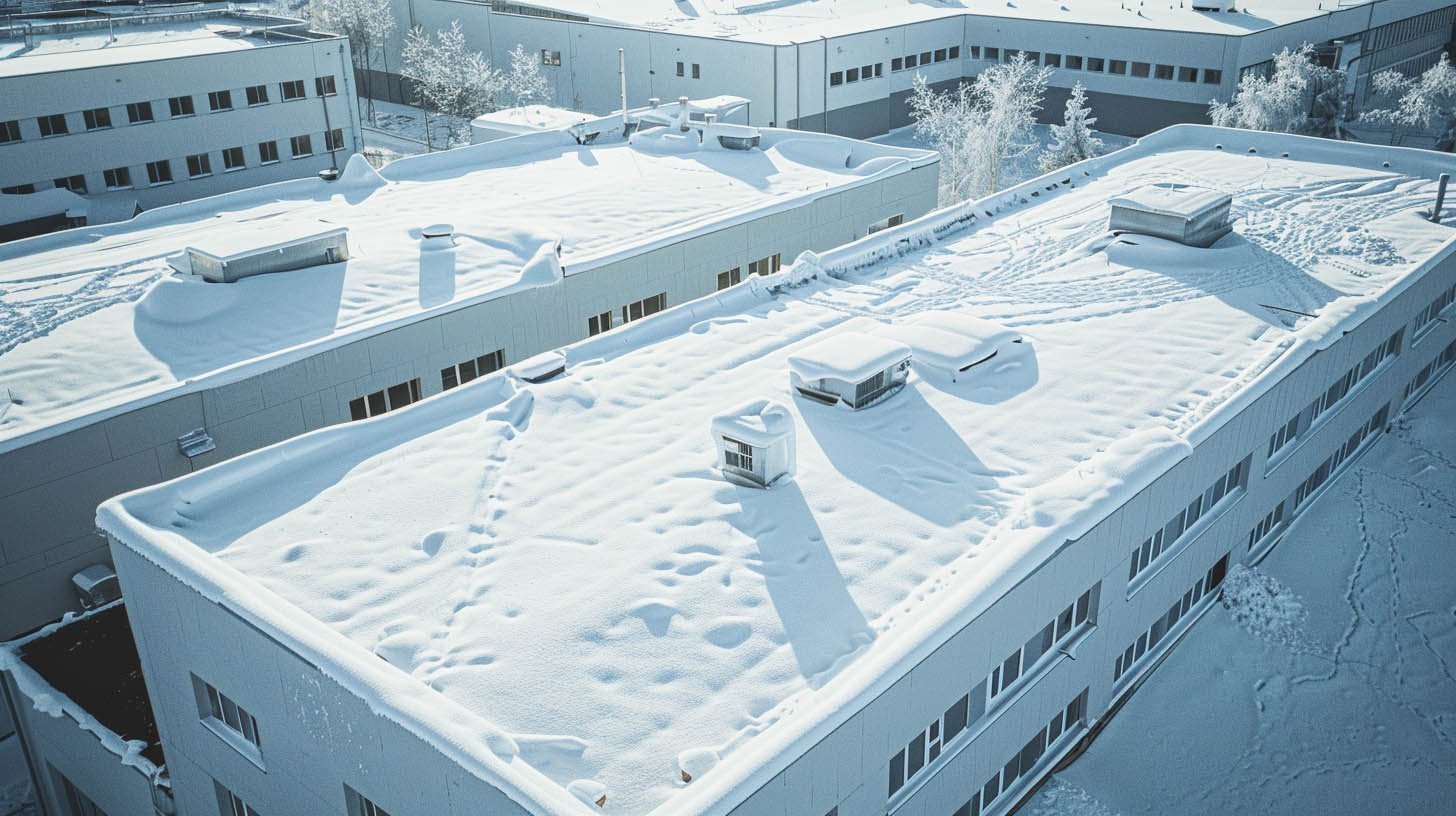Snow accumulation on commercial roofs can present significant risks, from structural stress due to heavy snow loads to potential water damage from melting snow. Understanding how to effectively manage these challenges is crucial for maintaining the integrity and longevity of your building's roof. This guide offers a detailed overview of the risks associated with snow on commercial roofs and practical strategies for mitigation.
Understanding the Impact of Snow on Roof Structures
Snow can vary significantly in weight depending on its water content. Light, fluffy snow may weigh as little as three pounds per square foot, whereas wet, compacted snow can weigh upwards of 21 pounds per square foot. It's crucial for building owners to understand the specific snow load their roof can handle, typically determined by building codes and the architectural specifications of the structure.
Evaluating Snow Load Risks
Structural Capacity: Every commercial roof is designed to support a certain amount of weight. This capacity should guide how much snow load it can safely handle before necessitating removal.Snow Density: Assessing the type and density of snow accumulation is vital. Lighter snow poses less risk than heavier, wet snow, which can quickly approach the maximum weight capacity of the roof.
Distribution of Snow: Uneven distribution of snow, such as higher drifts in certain areas, can create localized pressure points on the roof, increasing the risk of collapse.
Effective Snow Management Strategies
To mitigate the risks associated with snow accumulation, several management and prevention strategies can be implemented:
Regular Monitoring and Inspection
Visual Inspections: Regularly inspect the roof for signs of stress, such as visible sagging or leaks, which may indicate that the weight of the snow is becoming problematic.Professional Assessments: Engaging with roofing professionals like Summit Exteriors, located in Coeur d'Alene, ID, for detailed inspections can help identify potential vulnerabilities before they become serious issues.
Snow Removal Plans
Timely Removal: Establish a plan for timely snow removal that correlates with the current weather forecast and the known limits of your roof’s snow load capacity.Safe Removal Practices: Utilize tools and methods that do not damage the roofing material, such as plastic shovels or snow rakes. Avoid metal tools that can scratch or puncture the roof surface.
Preventive Measures
Heating Systems: Installing heating cables along the edges of the roof can prevent ice dams, which form when melted snow refreezes at the roof's edge, potentially leading to water damage.Improved Insulation: Enhancing attic insulation can help maintain more consistent temperatures on the roof surface, reducing the likelihood of ice dam formation.
Long-Term Roof Maintenance and Upgrades
Incorporating regular maintenance and considering structural upgrades can significantly enhance a roof's resilience to snow and ice.
Regular Gutter Cleaning
Ensure that gutters and downspouts are clear of debris to facilitate proper drainage. Ice buildup in gutters can contribute to ice dams and increase the overall load on the roof.
Structural Enhancements
For buildings in areas prone to heavy snowfall, structural enhancements to increase load-bearing capacity can be a wise investment. Consulting with structural engineers can provide guidance on necessary reinforcements.
Conclusion
Proper management of snow on commercial roofs is essential to prevent structural damage and ensure the safety of the building's occupants. By understanding the risks associated with snow accumulation and implementing strategic removal and preventive measures, building owners can significantly mitigate these risks. Summit Exteriors is committed to providing top-notch roofing services, ensuring that each project is handled with expertise and attention to detail, thus safeguarding your commercial investment against the harsh winter elements. For professional roofing services that prioritize safety and quality, consider reaching out to Summit Exteriors.



